He would move to Brynäs IF for the 1968-69 season, but appear in just 6 games for his new club. The following year the left winger would return to form with 14 goals and 19 points in 28 games as Brynäs would regain the Le Mat Trophy as champions of Sweden in 1970, having won the title 3 times in the previous four seasons.
In 1970-71, Hammarström would not only win another championship with Brynäs but also make his international debut for Sweden in the 1971 World Championships, scoring a goal and 3 points in 7 games.
Hammarström, born on this date in 1948, would set a Swedish career high with 19 goals on his way to 29 points in 28 games as Brynäs would complete a hat trick of championships in 1972 as well as leading Sweden in scoring during the 1972 Olympics in Sapporo, Japan with 4 goals and 6 points in 6 games. He would score a further 6 goals in 10 games of the 1972 World Championships where he would win a bronze medal.
His final season in Sweden saw him once again score 29 points in 28 games, scoring 18 goals before returning to the World Championships where he would score 6 goals and 9 points in 10 games en route to a silver medal.
With the competition for players growing as the NHL expanded from 6 teams to 12 in 1967-68 and then 14 and then 16 in 1972-73, plus the arrival of the free spending World Hockey Association and it's 12 member clubs, which doubled the total of players employed in North America from roughly 280 in 1971-72 to 560 virtually overnight. With only so many players in the minor leagues available to fill the 14 new rosters, teams began to look to Europe for talent, and Sweden in particular.
In May of 1973, the Toronto Maple Leafs signed rugged defenseman Borje Salming and Hammarström for his skating and stickhandling skills. He played well for Toronto for four seasons, highlighted by his NHL debut season with 20 goals and a career high 43 points. He was a model of consistency, totaling 41, 40 and 41 points over the next three seasons with a career high of 24 goals in 1976-77.
Prior to the start of the 1976-77 season, Hammarström would again skate for the Tre Kronor as part of Sweden's roster for the 1976 Canada Cup.
Hammarström had his issues adapting to the harder hitting North American style of play and was subjected to criticism for being European, best illustrated by a notorious quote from his very own team owner Harold Ballard, "Hammarström could go into the corner with a dozen eggs in his pocket and not break any of them."
After four seasons with the Maple Leafs, Hammarström was traded after 3 games of the 1977-78 season to the St. Louis Blues, who got exactly what they expected with 19 goals and 38 points in 70 games, as he had already scored a goal and an assist while still with Toronto, placing him at exactly 20 goals and 40 points yet again!
He would play one final NHL season with the Blues in 1978-79 followed by his fourth appearance for Sweden at the World Championships, his first in six years. He would score 4 goals and 5 points in 8 games and was rewarded with a bronze medal.
For the 1979-80 season, he would return to Brynäs IF where the club would immediately win another Le Mat Trophy as Swedish champions as Hammarström led the club in playoff scoring.
Following the 1980-81 Swedish season, Hammarström would close out his international career with a sliver medal for Sweden at the 1980-81 World Championships.
His career would come to a close follwoing the 1981-82 season, during which Hammarström would score 10 goals and 20 points, his 13th consecutive season with double digit goals and 20 points or more, dating back to 1969-70, an impressive feat when you take into account the much shorter schedule of games in Sweden.
Hammarström would finish with 427 NHL games and 116 goals and 239 points. Following his playing career he would become a scout for the Philadelphia Flyers and is credited for discovering Peter Forsberg.
Today's featured jersey is a 1979 Sweden National Team Inge Hammarström jersey. During his career Hammarström would play for Sweden on 7 occasions in 52 games, scoring 24 goals and 34 points, earning two bronze and two silver medals at the World Championships.
During the late 1970's, Sweden temporarily abandoned their traditional three crowns cresting in favor of the "tre kroner" wordmark, which left space for the polar bear logo of their Polar Caravans sponsorship.
In today's video section, Swedish stars Salming and Hammarström are profiled in this segment in 1973.

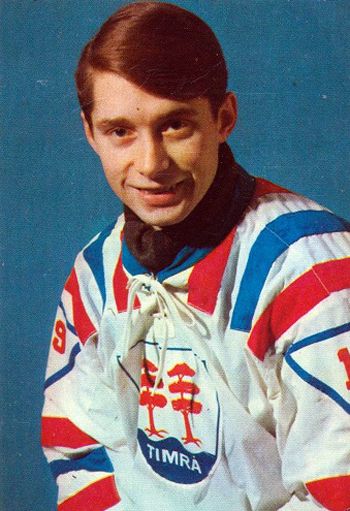
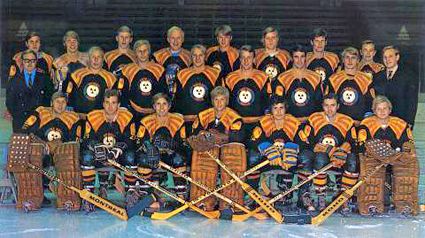
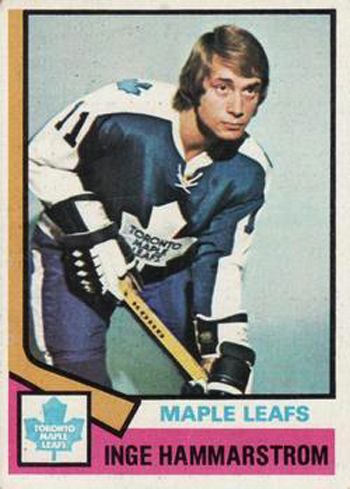
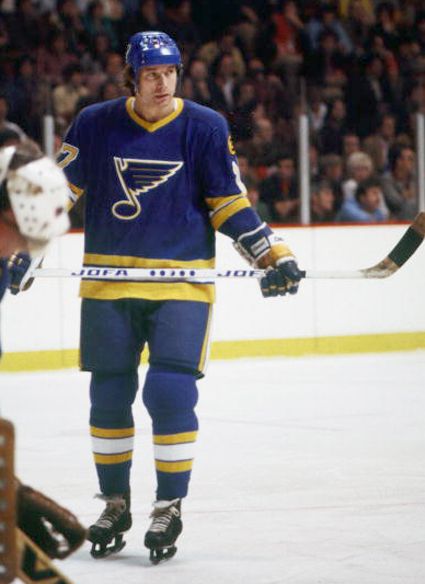
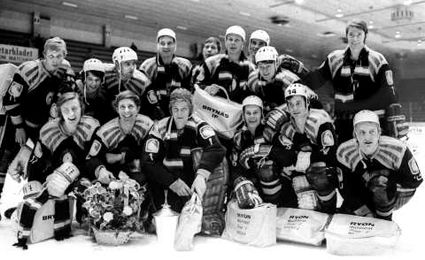
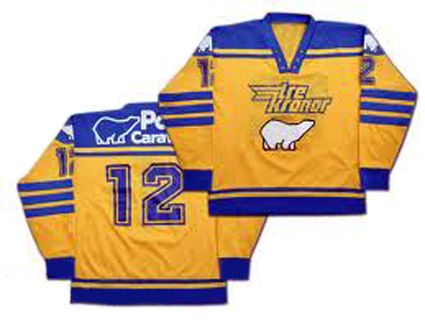










No comments:
Post a Comment
We welcome and encourage genuine comments and corrections from our readers. Please no spam. It will not be approved and never seen.